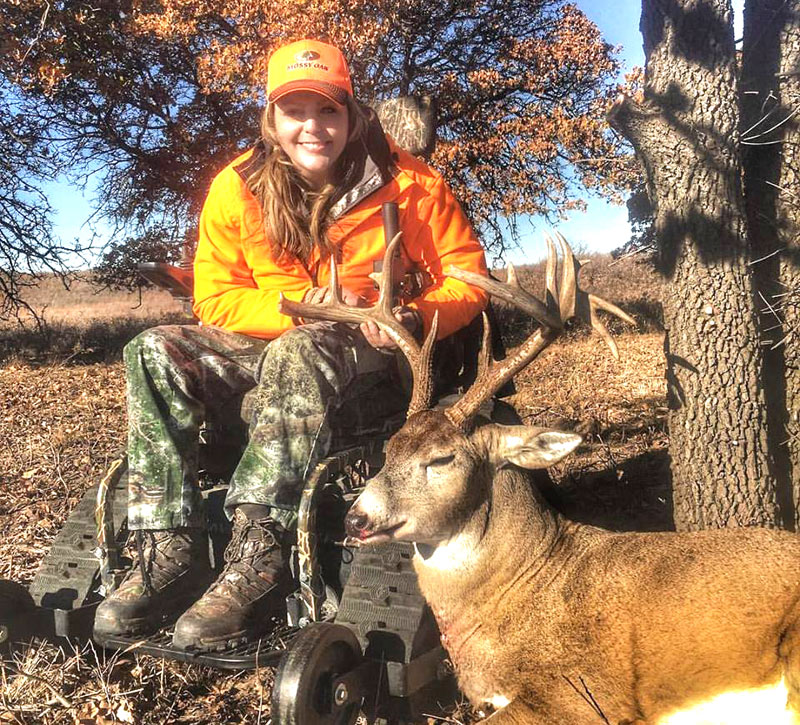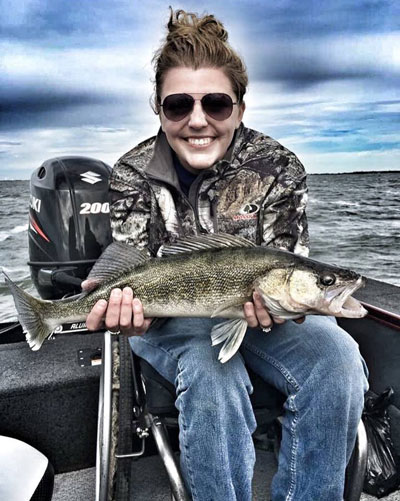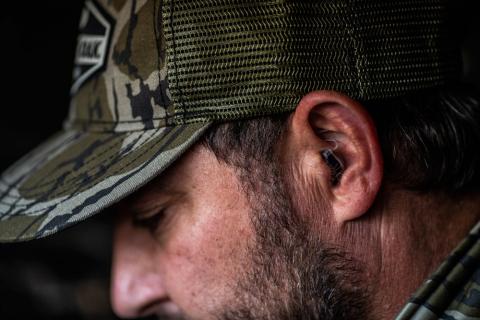provided by John Phillips
I first met Mossy Oak Pro Ashlee Lundvall of Cody, Wyoming, 5 years ago. “I’d like to become an outdoor writer and work in the outdoors,” Lundvall told me then. Her dream certainly has come true. In that short time, she’s won the Pathfinder Award presented by Safari Club International (SCI) and a hunting trip for her family and herself to Africa. Lundvall also has been appointed to the President’s Council for Sports, Fitness and Nutrition along with well-known outstanding athletes, movie stars and coaches. She’s been asked to become a brand advisor for a silencer/suppressor company and serves on two National Rifle Association (NRA) committees – the Outreach Committee and the Disabled Shooting Sports Committee. She writes for “Women in the Outdoors,” “Able Outdoors” and several other publications. She’s now training for archery competitions to qualify for the Paralympic Games either in 2022 or 2024.

I break down adaptive equipment into three categories: equipment originally designed for able-bodied people but that can be used by people with disabilities, equipment specifically designed for people with physical disabilities, and equipment or modifications of equipment people build in their garages and workshops. Let’s look at these categories.
Equipment Originally Designed for Able-Bodied People That Can Be Used by People with Disabilities, includes:
1. A Night Site – This type of scope originally was designed to help predator hunters take critters like coyotes, bobcats and others at night. However, hunters who are vision-impaired, blind or due to their mobility issues not able to get down on the scope and aim properly can use this scope. This riflescope adapts by taking the image that normally will be in the riflescope, enlarging it and putting that image on the screen that sits above the riflescope to allow that person to see the image much bigger than it appears in the scope. Another advantage to this riflescope is that it will fit on any type of rifle and even has recording capabilities, so the user can record the shot.
2. Primos Trigger Sticks – Often people with disabilities may have problems putting a rifle or a shotgun on a rest and holding it steady for the shot. To solve this problem, I use the Primos Trigger Sticks that allow for very good adjustability in the field and come with a mono, a bipod or a tripod and have a V-type rest where you can put your rifle to keep from having to hold it that gives you a rock-solid shot. When you may be dealing with other types of adaptive equipment, you won’t have time to make many adjustments with your shooting sticks. I like these trigger sticks because one pull on the trigger, and these sticks can move up or down, left or right. Then once you release the trigger, the shooting sticks are locked in place. These trigger sticks are the only rest I use when I’m in-the-field hunting.
 Equipment Designed Specifically for People with Disabilities:
Equipment Designed Specifically for People with Disabilities:
Be Adaptive is a company I recommend that features all kinds of adaptive equipment a person with a disability may need to go into the outdoors. This company has trigger pulls designed for many disabilities, bite triggers, rifle stands and archery stands. This company is one of the premier companies for equipment designed specifically for people with disabilities.
Equipment or Modifications of Equipment People Build in Their Garages and Workshops for a Person with a Disability:
What’s great about this equipment is you can learn how people have modified or built equipment, especially for a person with a disability. For instance, I have a friend, Jake Winlow, who’s a high-level quadriplegic. He always wanted to ride a four-wheeler like he had before he was injured. He and his dad took an ATV and completely modified it for my friend, Jake, to enable him to sit on an ATV and actually drive it. Jake and his dad took the seat off the four-wheeler and put in a high-backed seat with a 4-point harness. Then they welded different parts to the handles of the ATV and taped extenders to the key that started the ATV, because Jake had limited use of his fingers. These changes allowed Jake to be independent and mobile on his four-wheeler.
In her book, “A Redefined Life,” Ashley tells how she was injured at age 16 and not only recovered but today lives a life she’d only dreamed of having. Ashlee’s book is also available from Amazon.






























